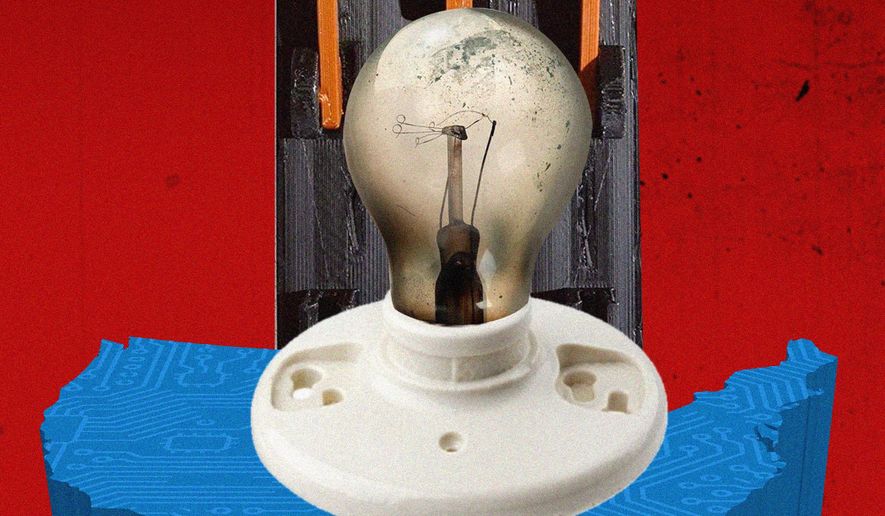OPINION:
From California to Texas to New England, America’s power grid reliability is in alarming shape. And there’s a common thread: The nation is taking apart its existing energy infrastructure far faster than it’s building reliable replacement generation.
This is most apparent in the Democrats’ sweeping new climate and health care bill, the Inflation Reduction Act. The legislation is full of ambitious energy provisions. But it appears that the bill is likely to make America’s chaotic energy transition even worse.
The legislation contains plenty of tax credits to accelerate the deployment of weather-dependent wind and solar power. The problem for America’s power grid, however, is that the rapid addition of these intermittent energy sources is making grid management exponentially more difficult. That’s particularly true when wind and solar are replacing the on-demand power currently provided by coal, natural gas and even nuclear power.
Renewable advocates believe a massive expansion of the nation’s electricity transmission capacity, along with the development of grid-scale battery storage, is the solution. Their thinking is that batteries can help with storing excess solar power for night-time use — or provide backup capacity when the weather doesn’t cooperate. They also envision that transmission corridors can easily move power to regions experiencing electricity deficits. That sounds great. But even with significant incentives to encourage new energy storage, the required grid-scale batteries to make this possible are still in their infancy. And the siting and building of new electricity transmission infrastructure is proving difficult as well.
Utilities and grid operators are currently approving some large-scale transmission projects. But getting them into service is now a remarkably tall order. At present, it can take a decade to gain the federal, state and local government approvals needed for new, long-distance power lines. And high-voltage interstate transmission lines inevitably run into a variety of objections, including the permitting challenges of erecting wires through private and public lands, and the reluctance of local authorities to forfeit control or submit to greater federal oversight.
Consider the case of just one transmission line proposed to connect part of Texas to the Southeast. The Southern Cross transmission line, a 400-mile, $2 billion project, is on track to begin construction in 2023, with the hope of entering service in 2026. Should the line actually be completed, it will have taken 17 years from inception to finish. This tells us that building the transmission systems needed for widespread renewable systems is unlikely to happen at the speed and scale required.
There’s still another problem, however. As America’s baseload power plants are being pushed off the grid, replacement infrastructure simply isn’t coming online in time. The problem is serious enough that grid reliability experts are raising alarms.
The North American Electricity Reliability Corporation, which oversees the reliability of the nation’s power supply, recently warned that the pace of America’s grid transformation is now “out of sync with the underlying realities and the physics of the system.” In fact, NERC says that seven different regions of the United States face elevated risks of power outages during extreme weather or spiking demand.
The Inflation Reduction Act’s enormous incentives for wind and solar are likely to exacerbate this trend. The bill’s market-altering subsidies are joining a flurry of regulations that the U.S. Environmental Protection Agency is proposing to accelerate coal plant closures. That means the nation’s current grid problems could turn into an unabated crisis.
Washington needs to do a critical rethink right now — while the nation still has significant baseload power plant capacity. The U.S. needs its longstanding power plants — particularly its remaining coal fleet — as a reliability hedge against the uncertainty and myriad challenges of ramping up renewable energy systems. Dismantling the nation’s existing energy infrastructure in the hope of finding reliable, future alternatives is a mistake. The warnings from regulators are clear. It’s past time we heed them.
• Terry Jarrett is an energy attorney and consultant who has served on both the board of the National Association of Regulatory Utility Commissioners and the Missouri Public Service Commission.




Please read our comment policy before commenting.